
8 Practical Steps to Help You Finally Complete That Garage Purge
We promise you won’t miss those dingy cardboard boxes.
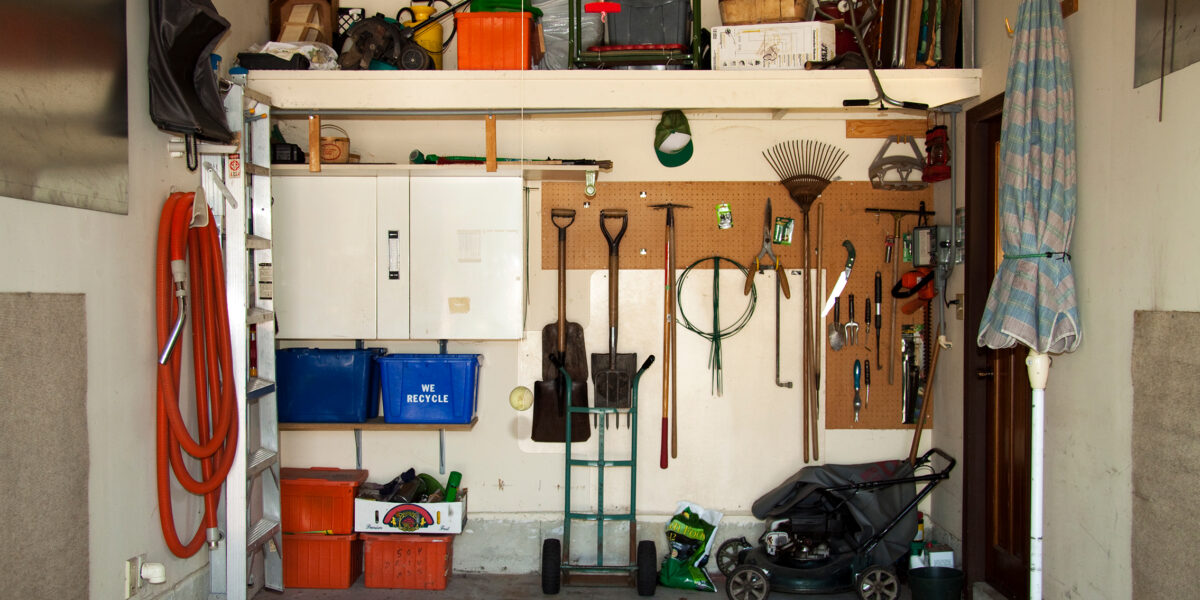
A garage is much more than a place to store your cars. It might be your home office, gym, or most commonly, a dumping ground for all of the things you haven’t thrown away yet. Whether you’re emotionally attached to these items or simply overwhelmed by their volume, there’s a solution: a full garage “purge.”
Amanda Titchenal, founder of full-service organizing firm Well Organized, says a major organizing project should either start or end with removing unwanted or unnecessary things in your garage. If you’re ready to organize your home, clearing out your garage will give you some extra storage space to work with. As Titchenal previously explained while talking about pro tips to organize your garage, the garage is an often-neglected spot that could likely use the occasional cleanout.
This is easier said and done, though, especially if you have hidden away precious mementos and other personal items. Below, Titchenal walks us through her process to complete each purge, and she shares the advice she gives her clients along the way.
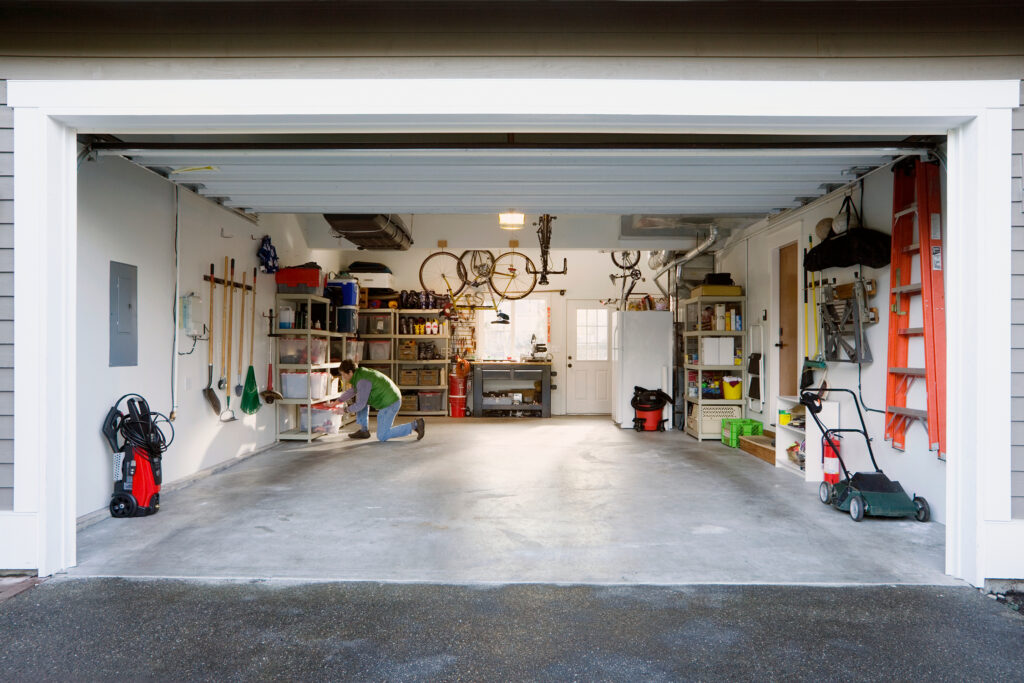
Don Mason/Getty Images
1. Prepare How You’re Going to Toss Your Stuff
Thinking ahead is key, and that requires you to consider how you’ll dispose of the recyclables, trash, and waste you’ll have left over. Titchenal says to check your city’s website and see where you can find hazardous or e-waste drop-off locations, or if there are dumpster rentals in your area. You can also schedule a donation pickup for the day after you’re completing your garage purge to make the process as smooth as possible.
2. Categorize Everything
Titchenal and her team begin each garage purge by categorizing all of the items. General categories include household items (think paint, tile, and other building supplies), tools, camping equipment, beach gear, sporting goods, holiday decor, memorabilia and mementos, and what she calls the “Costco backstock”—food supplies, toilet paper, paper towels, and other essentials. She adds that shoes and other personal items are also separated, and there’s typically some sort of miscellaneous pile with anything remaining.
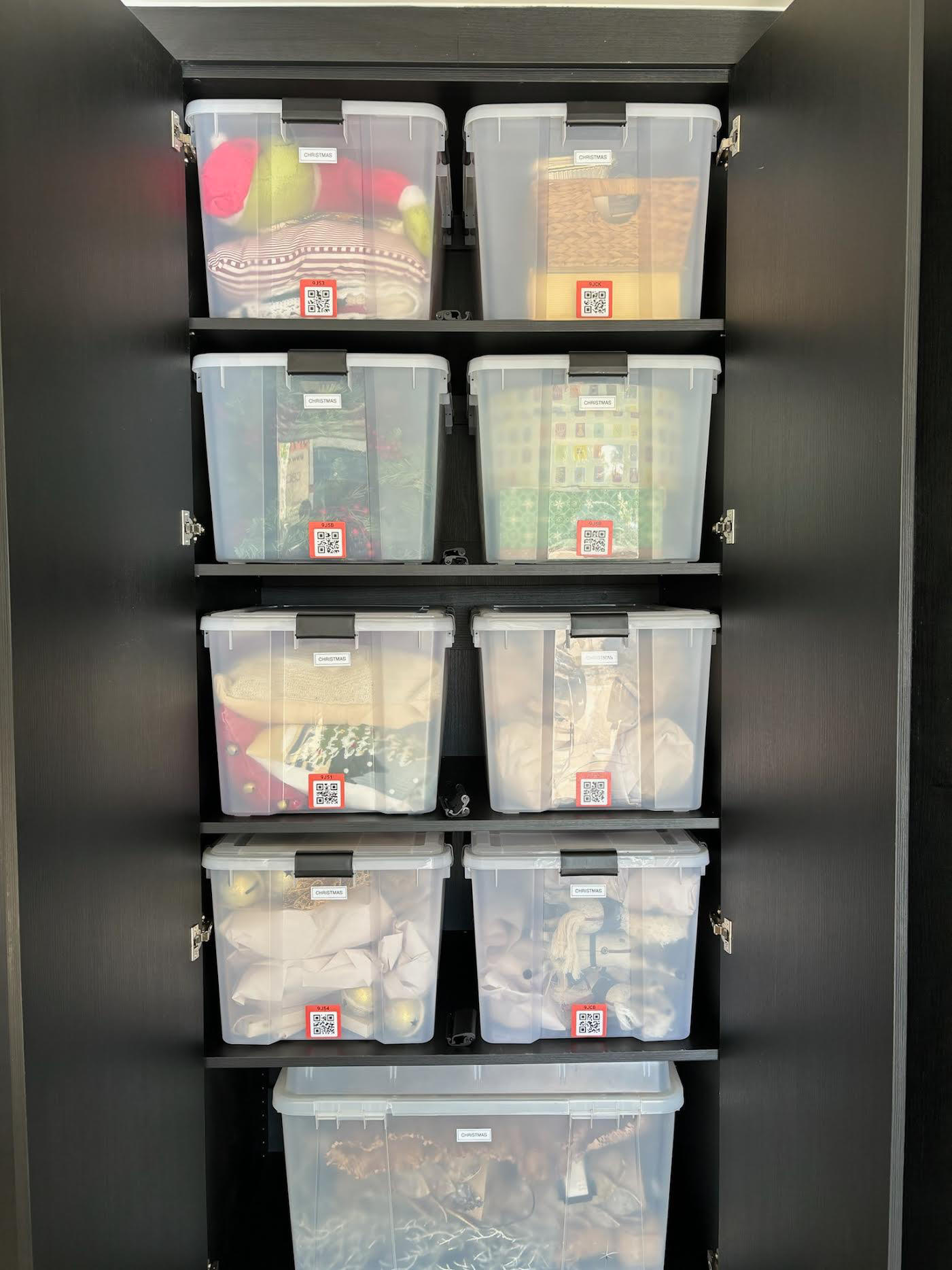
Amanda Titchenal
3. Create a Grid on Your Driveway
You’ll want to see everything before you toss it, and Titchenal has developed a system to lay it all out there.
“If somebody has a driveway or even an alleyway, we try to section it off, almost as if it’s a grid,” she says. “If you have painter’s tape you can put out or make big signs on paper, that’s super helpful, too.”
These zones will have the names of each category, like household items, tools, camping equipment, and so on.
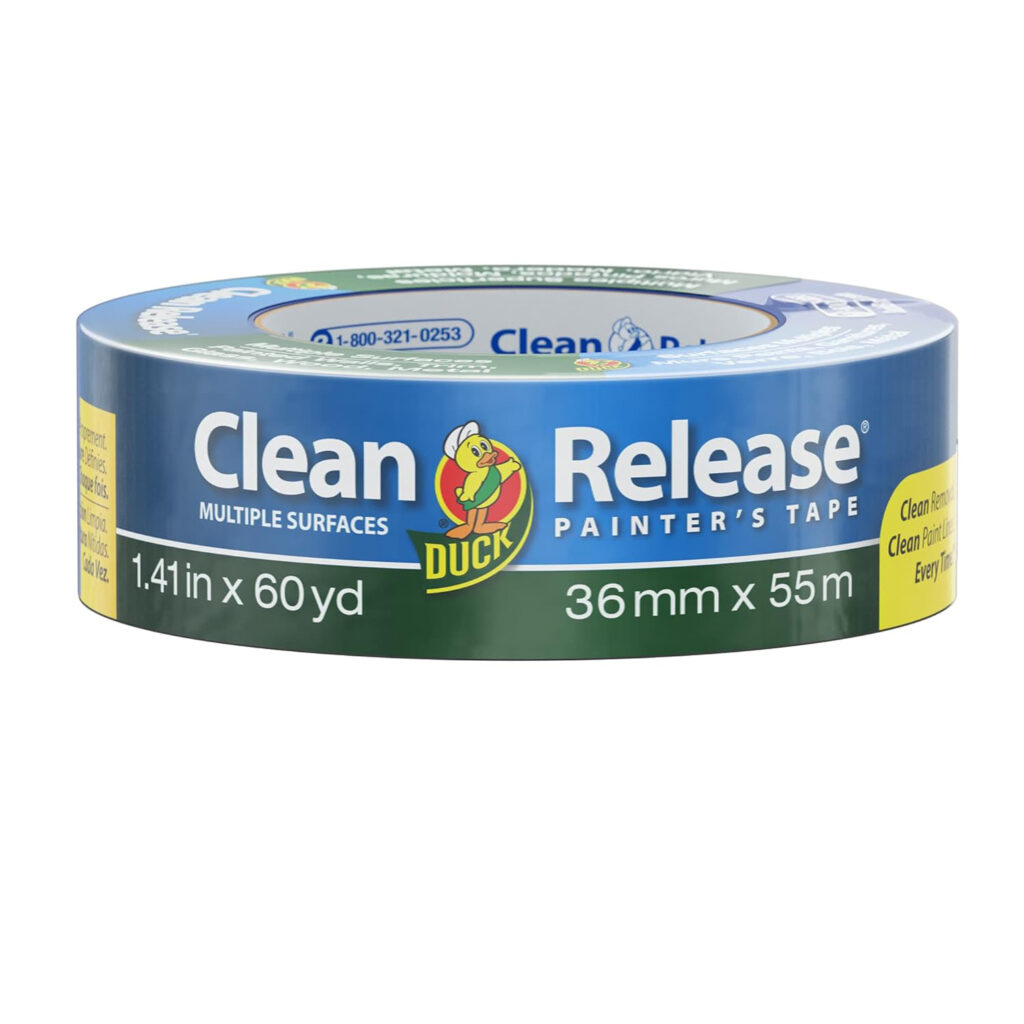
Courtesy of Amazon
4. ‘Micro-Categorize’ Each Section
Categorizing is only the beginning, and it leads to the next step, which Titchenal refers to as “micro-categorizing.” One example is to sort holiday decor by each celebration, so Christmas lights, ornaments, and other decor are separated from what you bring out for Halloween, Thanksgiving, Easter, etc.
5. Know That It’s OK to Start Small
“If you have limited space or time and can’t do everything at once, it’s super important to just stick to one category,” Titchenal says. “So, if you can find all of your sporting goods and purge that in one day, great.”
It may also depend on how you’ve organized your home, and what you actually need to get rid of in your garage.
“Some people go in their garages and they barely have anything,” Titchenal adds. “Some people have been living in their house for 40 years, and they can’t even walk inside of their garage. It’s still the same process, no matter the volume of stuff.”
6. Bid Farewell to Cardboard Boxes
What you decide to toss is up for debate, but there’s one thing Titchenal insists you remove: cardboard.
“We get everything out of cardboard, for a few reasons,” she says. “One is that cardboard breaks down over time and gets smashed and doesn’t hold shape. You don’t know what’s inside of them, even if they are labeled. It could’ve been a box you’ve reused five times that says ‘Kitchen’ or ‘Mom’s Clothes.'”
As an alternative, Titchenal recommends swapping out cardboard boxes for clear plastic bins that will help you organize and protect your belongings.
“When something’s in a clear bin, it has a purpose and the label, and you’re more likely to use that bin and come back to it at a later time,” she says. “They also stack a lot better, they don’t break down over time, and they’re an investment that you can keep your things nice for long periods of time.”
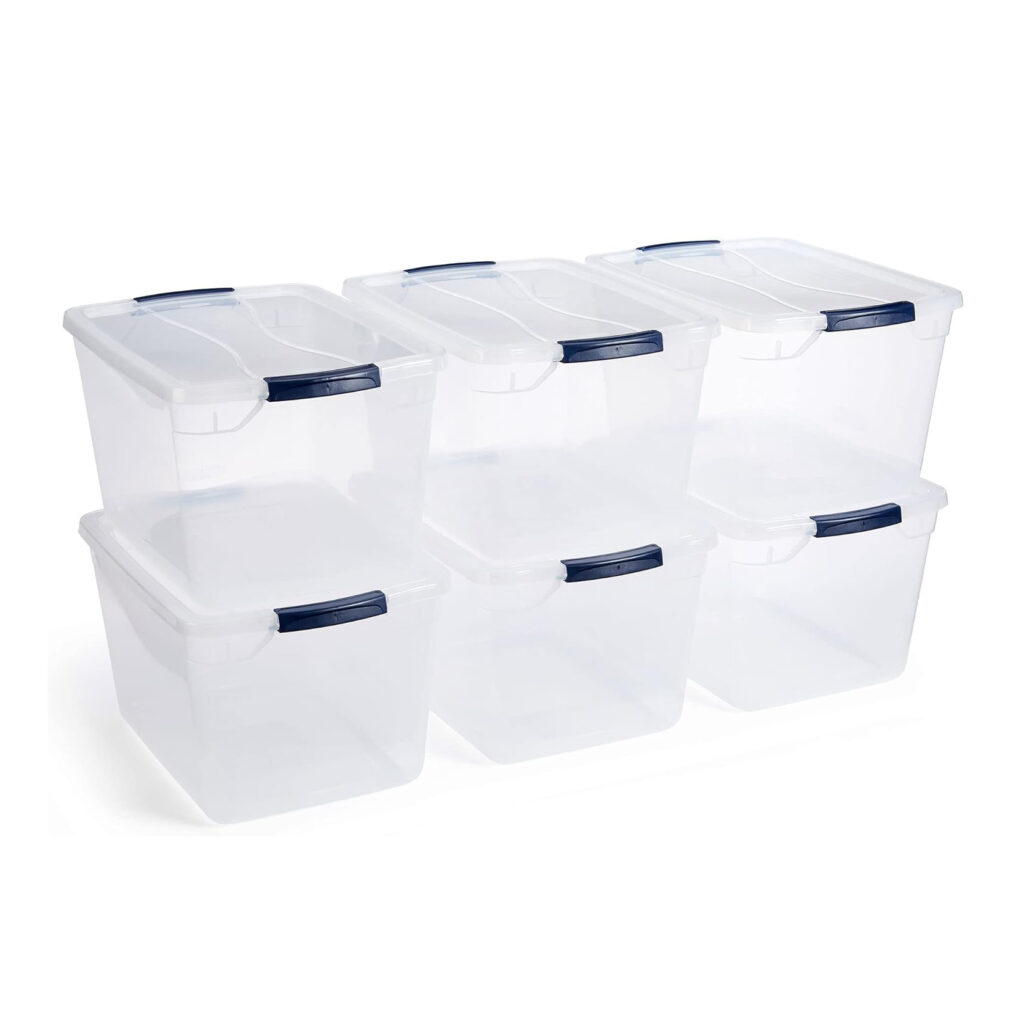
Courtesy of Amazon
7. Consolidate Memorabilia and Mementos
Everything that falls into the “memory” category, like memorabilia and mementos, can take up a lot of physical and emotional energy. In fact, Titchenal says this section is worthy of its own standalone organizing project, especially when her clients have a lot of photos, paperwork, or artwork to go through. Her goal? Consolidate as much as possible.
“Oftentimes, that stuff is in a million different cardboard boxes that are maybe broken or smashed and not easily stacked,” she says. “People don’t have time to go through memories in detail when they’re doing a garage clean-out, so it’s just a matter of consolidating and getting them into like-sized bins, so it can be addressed at a future date.”
If you’re having a difficult time parting with anything, Titchenal typically tells her clients to photograph their memories. In the past, she’s had clients take photos of their kids’ stuffed animals, artwork, homemade crafts, and other sentimental belongings to keep them as more convenient storage items.
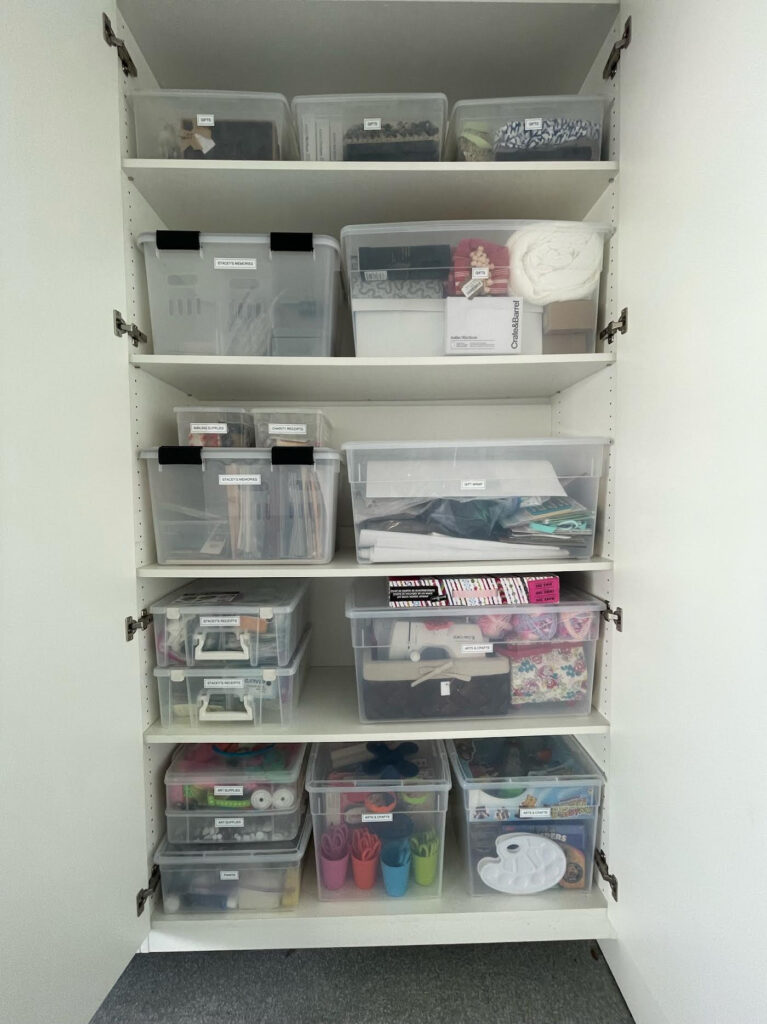
Amanda Titchenal
8. Understand the Emotions That Come with Purging Items
Emotional attachment sometimes gets lost in the conversation, and even the word “purge” can sound quite aggressive. Titchenal works through these challenges with her clients and encourages them to focus on the big picture.
“If something is super emotional, let’s just put it aside for a later date,” she says. “If you come to a box that’s filled with something that reminds you of a loved one who passed away or maybe even just a really hard time in your life, it can derail you from your ultimate goal.”
Constant reminders of grief or sad memories can be a source of negativity, and Titchenal suggests stowing those away to lighten up your space—in more ways than one.
“Let’s get this stuff out of here, so it doesn’t remind you every single day of the sadness that you feel,” she says. “Maybe keep a few things in a box. Let go of those negative emotions and just keep the ones that are happy memories.”
